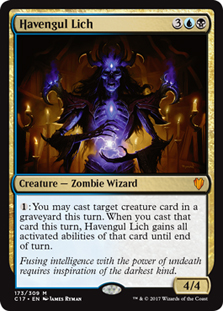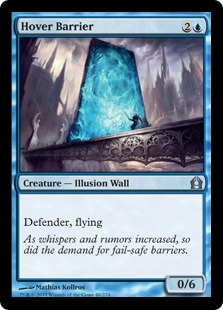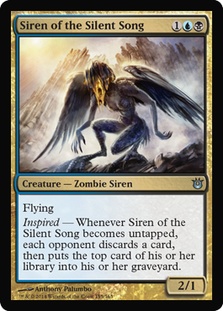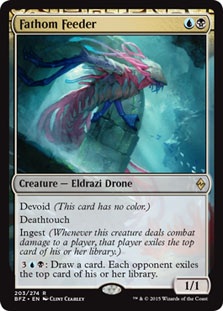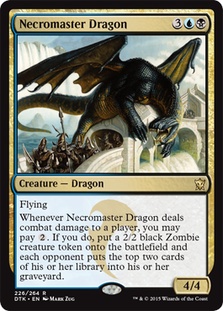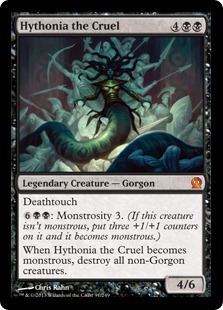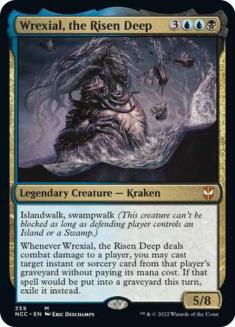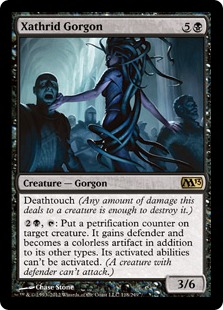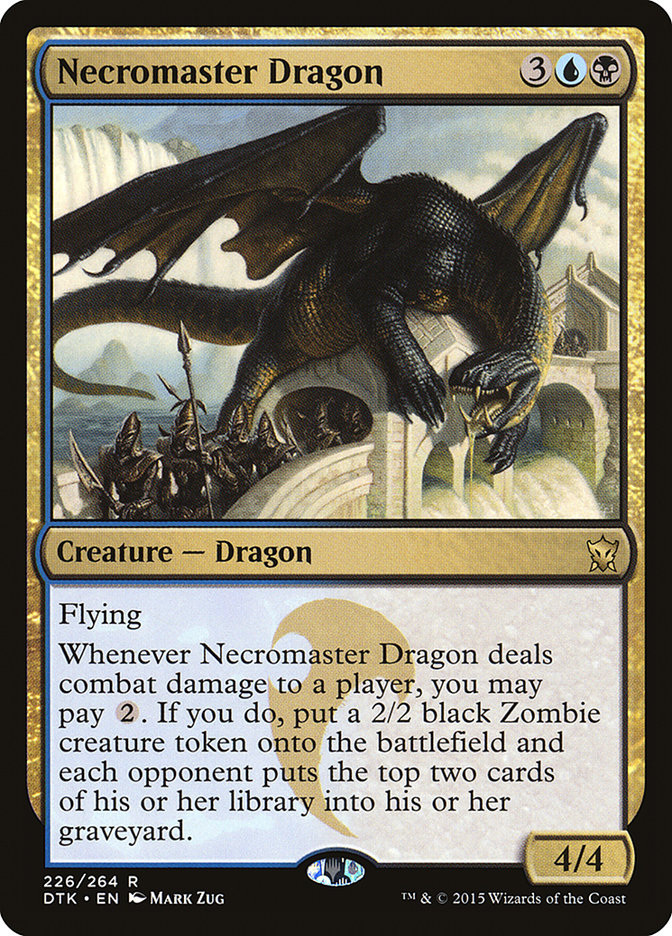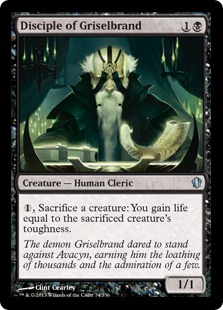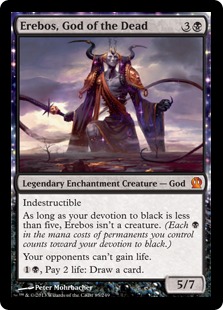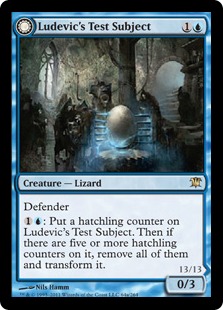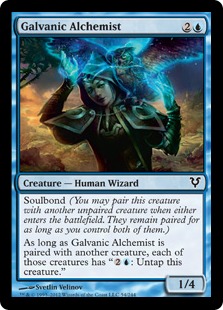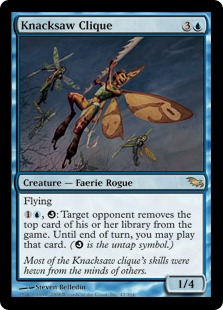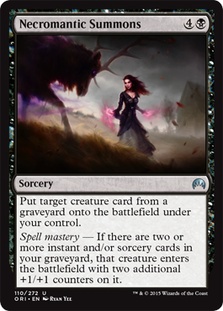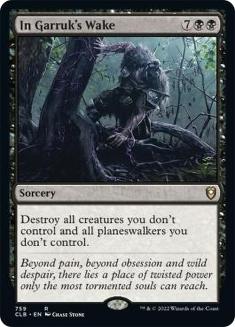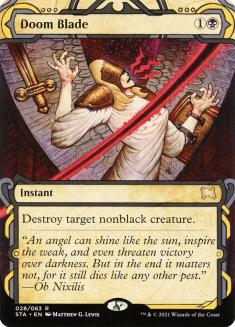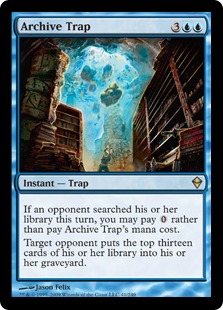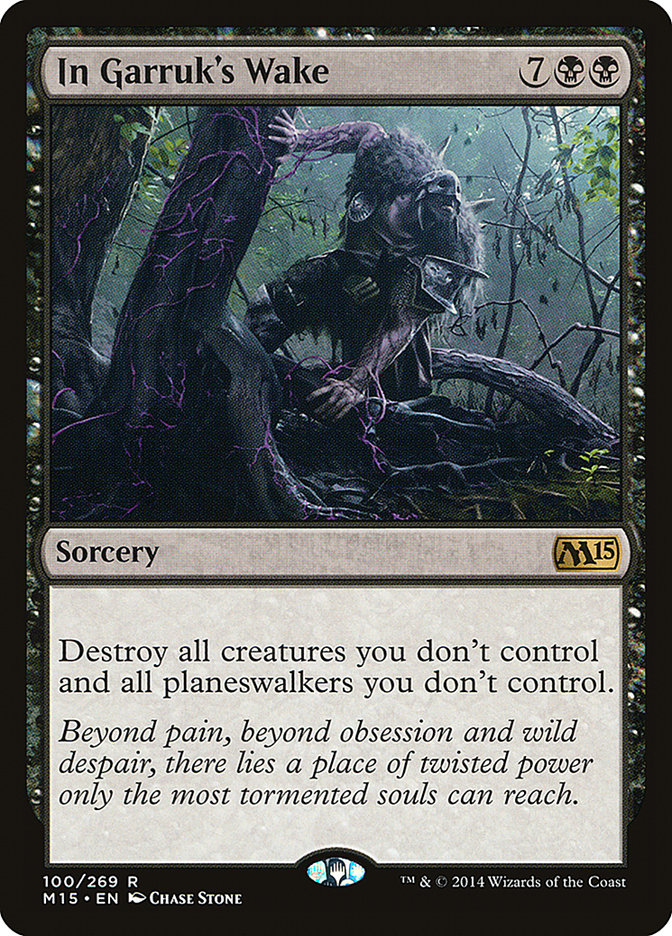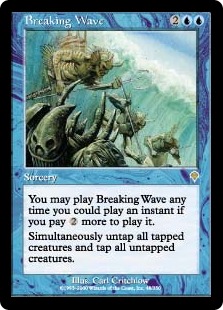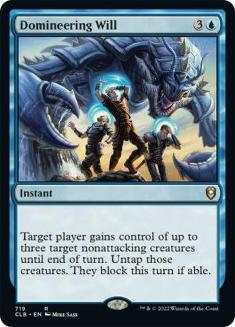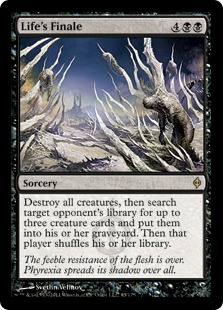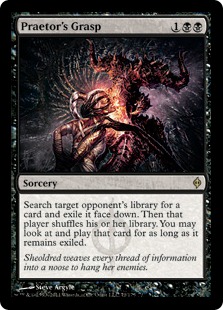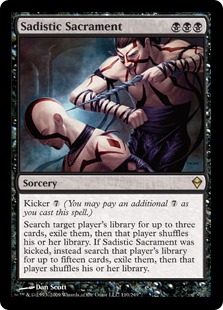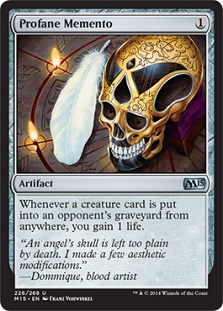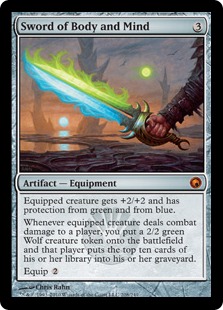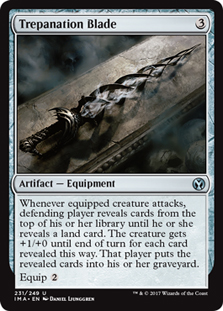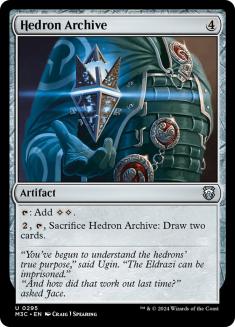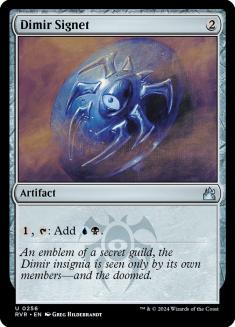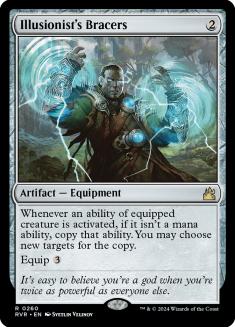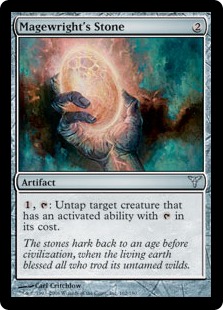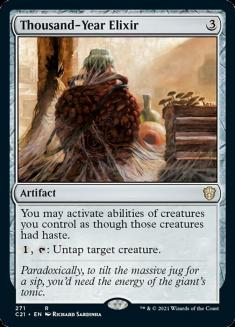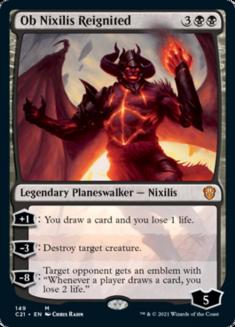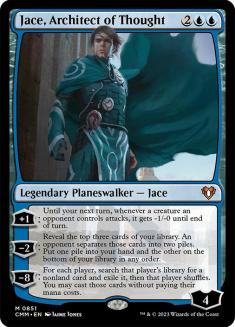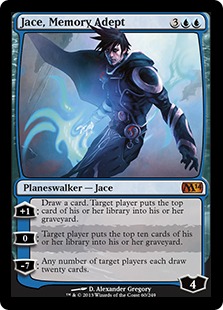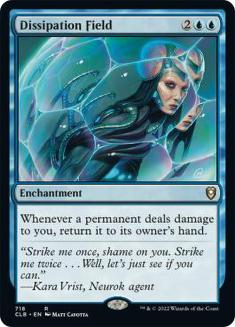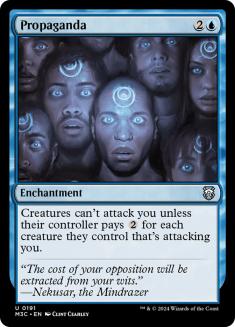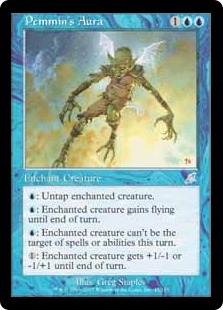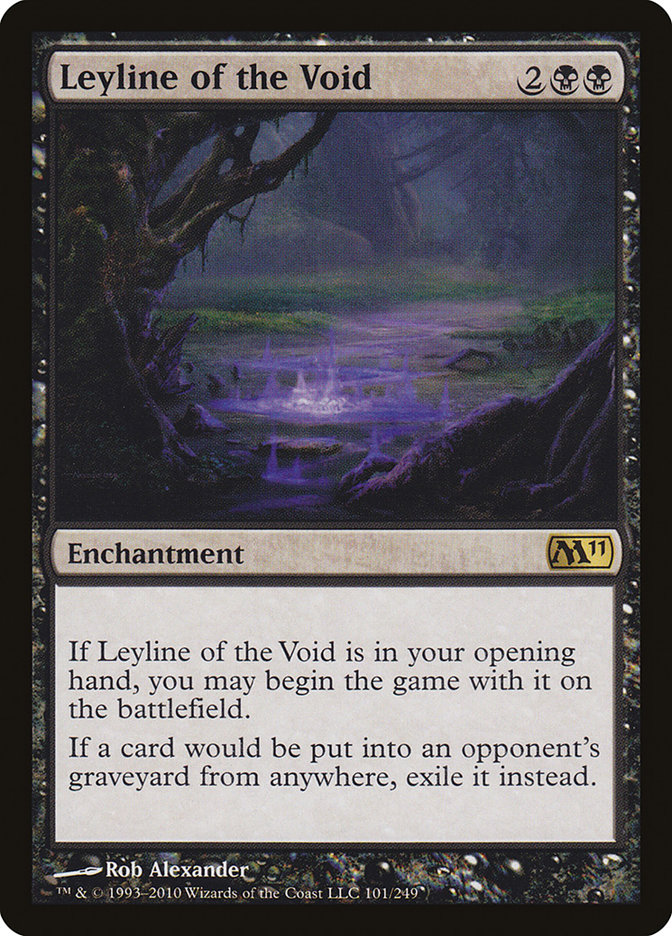 the Kozilek deck I covered two weeks ago. Anyone who wants to skip ahead is welcome to scroll down, since this will take a few paragraphs.
the Kozilek deck I covered two weeks ago. Anyone who wants to skip ahead is welcome to scroll down, since this will take a few paragraphs.
I picked that deck to work on in part because I thought covering a theme deck based heavily out of the latest block would be a cool way to put some new cards in the spotlight, on top of the interesting challenge of retooling a colorless deck. What I didn’t know at the time, and what I couldn’t know at the time because I was working that weekend and finished the article the previous Thursday, was that the various Eldrazi decks would absolutely demolish Pro Tour Oath of the Gatewatch. Normally what happens in a Constructed tournament shouldn’t impact an article about Commander, but part of the purpose of Dear Azami is to provide budget advice, and the results of the Pro Tour caused some pretty dramatic price spikes in a few cards that I added to that deck.
This happens sometimes. Magic is a game with a dynamic and ever-changing secondary market, and expecting card prices to remain static is foolish at best. In this case, though, I wound up trying to fix the price discrepancies via email on Monday, and while most of the discrepancies got ironed out in time, anyone who goes back and looks at the price list at the end of that article will notice that the math doesn’t quite add up right.
Now, there’s not much that I can do to prevent something like this from happening again, especially since it looks like I’m going to be working weekends more and more frequently. I am going to be a lot more careful when listing new cards, especially during spoiler season and around the Pro Tour. Fortunately another mass price spike like that one isn’t terribly likely to coincide with an article, but I wanted to make sure that you all know I didn’t miss what had happened.
Now, let’s spin the metaphorical wheel and see what I’m working with this week.
|
Dear Azami, Hello! I have a bit of a problem with deckbuilding in EDH, in that most of my decks don’t remain assembled very long. I’ll play a game or two, and then I’ll need a few pieces for some other deck with a general I’ve just gotten an idea for, and before you know it, that deck and general fall by the wayside for a year or more. I mention this because I am presenting one of the only decks I have actually stuck with for an extended period of time. Milling is not a popular strategy in EDH, whether because of the large deck sizes, the multiplayer aspect, or the popular cards that randomly hose you out of nowhere (OG Eldrazi titans, etc). However, Phenax is a general that allows you to play defensively and still progress your game plan. I have had some very explosive games with this deck, and it’s some of the most fun I’ve had in Magic. I tend to have the most success either befriending the player who wants to be milled (such as Bruna, Light of Alabaster, for example) or targeting the player who seems most likely to win. That said, there are some consistency issues; I often run into mana difficulties, and my opponents will sometimes gang up on me because I’m focusing on a single player. I have recently replaced a few cards in my deck, so I have not yet been able to test this particular version. I would appreciate any help you can give me on making my mainstay deck more fun to play with and against, as well as some general advice on committing to decks and sticking with them. A few notes on specific cards: Undead Alchemist is one of my favorite cards in the game and half the reason for playing the deck. Cards like Bloodchief Ascension and Duskmantle Guildmage allow me to defeat players who cannot be entirely milled, but sometimes they get me targeted when people take notice. And Havengul Lich seems very well-positioned with the recent rules changes, but I currently have no ways of producing off-color mana. Whether it should be optimized or not, I will leave to your judgment. Thank you for your consideration, and I look forward to hearing from you! Jaymic PHENAX, GOD OF DECEPTION 15 Island 11 Swamp |
One of the unique things about Commander is how the strength of a single card can take a strategy from unplayable to surprisingly powerful. Mill is a perfect example, since before the printing of Phenax, such strategies were basically forced to rely on a combination of artifacts like Grindclock and one-shot milling spells like Archive Trap. While these cards weren’t necessarily bad, they did require so much deck space before becoming effective that it was hard to make room for any other effects or more than a handful of creatures.
Phenax’s real strength is that he lets you play a deck full of meaningful creatures and still progress your gameplan, since every card with a power/toughness box is now a repeatable mill engine. In my own playgroup, I’ve seen several people start to build around the God of Deception, but none of those lists has ever made it to the table. Let’s just say that I’m excited to work on a complete version of the deck.
Now, on to the changes.
The Creatures
Out:
You left the question of Havengul Lich up to me, and I’ve decided to cut it. My main reason for this was that even if I scrapped half of your manabase to stuff the deck full of Fellwar Stones and Manaliths, you’d still be left in the situation where you need to find two, three, or sometimes even four of those prismatic sources in order to get the creature that you want or use its abilities, and even with a complete overhaul like that, I foresee too many situations where the Lich just doesn’t do what you want it to.
Hover Barrier and Siren of the Silent Song are both solid but fairly unimpressive. I get that you want early creatures that synergize with Phenax, but if we wanted a second cheap Wall to supplement Wall of Frost, I’d go With Glacial Wall. The Siren only mills for one, and even once you count the milling effect on untap, it’s only chipping away for about five cards a turn, spread out across all your opponents. If we want to keep it, it’s for the ability to make all of your opponents discard, and in my experience, messing with people’s hands will draw a disproportionate amount of hate your way.
This effect is most notable when you play with something like Teferi’s Puzzle Box, which doesn’t even impose card disadvantage on anyone. Despite this, people despise it because it means they can’t plan ahead and they lose access to whatever sick plays they could have done. The Siren isn’t nearly powerful enough to justify you drawing that kind of ire, so out it goes.
Necromaster Dragon comes out because saboteur effects really aren’t what this deck wants. You want to stay out of the red zone and chip away at people’s libraries while holding up a defensive wall, and Necromaster Dragon just isn’t part of that plan.
The rest of these cuts were made because you mentioned the deck having mana problems, and since you were running a very reasonable 37 lands plus a handful of mana rocks, I made an effort to cut some of your more expensive options. Fathom Feeder is cheap but is only included for the activated ability, and I think you have better things to do with five mana a turn. Similarly, Wrexial, the Risen Deep; Hythonia the Cruel; and Xathrid Gorgon are all fairly expensive drops that often ask for more mana later. All three are quite powerful, but your curve needed to be lowered and these aren’t the curve-toppers you really want.
In:
Arbiter of the Ideal might cost just as much as some of the cards I just cut, but instead of demanding more mana later on, it lets you cheat permanents onto the battlefield every turn for free. Disciple of Griselbrand is a cheap sacrifice outlet that plays into your “toughness matters” theme and will also help you survive the onslaught of damage-based decks.
Erebos should be fairly easy to turn into a creature in your deck, and seven toughness for four mana is a great rate. You don’t really care about keeping your opponents from gaining life, but his card drawing ability is great and fairly cheap to use. Ludevic’s Test Subject is another cheap creature with the potential to get huge, and a 13/13 is a lot better at deterring attackers than a Wall of any size.
Galvanic Alchemist and Knacksaw Clique are the beginnings of an untap theme that I’m adding. The Alchemist will pair with your biggest creature to grind though chunks of your enemies’ decks at the cost of three mana a use, and Knacksaw Clique creates an engine with itself that essentially means you can mill five cards for every two mana you have. One of those five will be payable by you, but that’s less relevant to your plan and why I’m okay running the Clique but not Havengul Lich.
The Spells
Out:
I get what you’re going with by including Necromantic Summons. Reanimation is a natural pairing with mill, since it means your mill theme actually “does something” before you completely run someone out of resources. With that being said, I’m cutting it for two reasons. First, a fair amount of your effects “mill” by exiling cards. Second, I’m planning on adding some graveyard hate to combat your deck’s weakness to effects like the original Eldrazi Titans. There’s an argument for cutting Extract from Darkness for the same reasons, but that spell does something even if you don’t have anything to reanimate, and the lack of targeting on it means that you’re a lot less likely to be blown out while casting it.
In Garruk’s Wake is a great card, but nine mana is a lot more than you want to be paying for anything in this deck. Doom Blade comes out for two reasons. First, as targeting restrictions go, “nonblack” is fairly likely to come back and bite you. If you wanted a removal spell here, I’d go with Murder, Victim of Night, Go for the Throat, or Rend Flesh before Doom Blade. Second, one-for-one removal tends to line up pretty poorly in Commander. I’d rather have effects that mess with multiple creatures or the whole battlefield.
Archive Trap comes out for one pretty simple reason. It doesn’t do enough. Don’t get me wrong; when it comes to one-off mill spells, Archive Trap is one of the best out there. However, because your primary plan is to use Phenax’s ability, even a mid-sized creature will outpace Archive Trap in a few turns and will do other things besides that. It also can’t act as a backup plan in case Phenax gets invalidated somehow, because it will only ever mill thirteen cards and you don’t have the shell to make that relevant without your Commander.
In:
Breaking Wave joins Turnabout in royally messing with combat math and drastically increasing your clock. The ideal scenario is to cast it precombat on an opponent’s turn, tap down the army that was about to swing, tap your team in response to milling someone, and then untap them all, ready to block or mill again as needed. Domineering Will fills a similar space, as you can either target your own creatures for additional uses of the mill ability or borrow someone else’s toys to bolster your defenses. You can also gift the creatures to someone else if you want to play politics.
Life’s Finale is an affordable Wrath effect that lets you preemptively snipe threats out of an opponent’s deck, useful if you know someone has something you can’t beat once resolved or you just want to lower the threat density you’ll be facing.
Finally, cards that shuffle themselves (or in some cases the whole graveyard) back into the library when they hit the graveyard are huge problems for mill decks. The mere presence of the original Eldrazi Titans in a deck can completely invalidate a mill deck unless you get exceptionally lucky. That’s what Sadistic Sacrament and Praetor’s Grasp are for. If you know someone is packing cards that a mill deck can’t beat, just go into their deck and exile the offending cards. You get the added bonus of not having to face some of the biggest monsters in Magic later down the road.
The Artifacts
Out:
Nothing too exciting here. Profane Memento is on-theme, but a card that does nothing but gain life had better gain some truly astronomical amounts of life to make it worthwhile, and this doesn’t qualify. The two equipment get cut for the same reason Necromaster Dragon did. You don’t want to be battling, so attack and combat damage triggers just aren’t what you want, even when those triggers mill a little. Hedron Archive is turning into a slightly more relevant mana rock.
In:
Dimir Signet helps fix your colors and comes down two turns earlier than Hedron Archive. Sure, it doesn’t ramp you quite as much or have the ability to turn into cards later, but opening hands with the Signets are a lot more likely to be playable than those with the Archive.
The other three additions all turbocharge your milling. Illusionist’s Bracers can be attached to your strongest creature to double the amount of cards you mill. (Or even quadruple, if you put in on Consuming Aberration.) Magewright’s Stone and Thousand-Year Elixir can be used to untap any creature for a second use, while the Elixir comes with the powerful ability of giving your entire team haste for the purposes of Phenax’s ability. This actually turns into a hilarious mini-combo with Undead Alchemist, since you can get Zombie tokens from milling someone and immediately tap those zombies to mill more cards, hopefully making more Zombies that you can tap to mill more cards…
It’s not infinite, but it does seem really, really strong. Given that the other half of the combo is your favorite card in the deck, that alone was enough to include it.
The Planeswalkers
Out:
It isn’t really a secret that I don’t like Planeswalkers in Commander, so any inclusion needs a staggering power level or amount of synergy to make it through one of my edits. Jace, Memory Adept actually came really close to staying because of how good his zero ability is and how on-theme the whole package is, but in the end, I decided you could do without the target he represents.
The Enchantments
In:
Dissipation Field; Meishin, the Mind Cage; and Propaganda are all being added to enhance the defensive “pillow fort” nature of the deck. Whether it’s because their creatures have no power or because going after you will allow for your opponents to bounce their attackers, you’re a lot less likely to be hit with any of these on the battlefield, and that means you have as much time as time as you need to grind through opposing libraries.
Pemmin’s Aura gets included for similar reasons as Magewright’s Stone, except it’s both more fragile and a lot more explosive than either of the artifact counterparts. If your target doesn’t get removed in response, every blue mana you have access to turns into a huge chunk of milled cards, and it isn’t too unrealistic to imagine this as a win condition almost in its own right.
That would be the end of the changes I made, except that the list you sent in had a total of Ninety-nine cards including Phenax, so I have space for one more addition. Normally I would’ve shared that up front, but the card I’ve got in mind for this slot is potentially problematic and deserves to be discussed in length on its own. If you decide not to run it, I’d recommend slotting Jace, Memory Adept back in to make up the lost slot. With all that being said, here’s the last addition that I want to make.
In:
Oh boy.
Let’s be clear: I’m well aware that Leyline of the Void has a huge amount of anti-synergy with a lot of the cards in your deck. Just to start, there’s Consuming Aberration, Keening Stone, Grimoire of the Dead, Bloodchief Ascension, Jace’s Phantasm, Diluvian Primordial, Nighthowler, and quite a few other cards that simply don’t work as intended when Leyline of the Void is on the battlefield. That cost is not to be undersold, and I’m not trying to brush over it. Nor would I have rightly been able to cut all the graveyard matters cards from your deck, given that many of them are among the most powerful in your list. And they make up a significant portion of your total card slots.
So if it’s so bad for you, why would I suggest it? It’s honestly not because of the Eldrazi problem, great as that threat is to your gameplan. I’m suggesting it because there are decks out there that will actually laugh in your face as soon as you try to mill them and just win the game that much faster. In my playgroup there are decks built around Balthor the Defiled; Jarad, Golgari Lich Lord; Karador, Ghost Chieftain; and two Meren of Clan Nel Toth lists that all fall into this category. From what I hear, that’s fairly tame. Now, maybe I’m wrong and the Bruna, Light of Alabaster deck you mentioned is the most egregious of graveyard offenders in your metagame, but as it stands, I think you need at least one card to shut decks like those down.
It’s not just a silver bullet that invalidates certain archetypes, though. You’ll be hard-pressed to find a Commander deck that doesn’t have some interest in abusing the graveyard, so while you might be limiting your own progress by running this, you’ll also be hindering everyone else to some extent.
In the end, this decision is yours, but I thought diving into one of the thornier problems I faced while editing your deck would be worthwhile.
Putting all the changes together, we get this:
Creatures (29)
- 1 Knacksaw Clique
- 1 Nemesis of Reason
- 1 Wall of Frost
- 1 Guard Gomazoa
- 1 Mindshrieker
- 1 Undead Alchemist
- 1 Disciple of Griselbrand
- 1 Selhoff Occultist
- 1 Ludevic's Test Subject
- 1 Galvanic Alchemist
- 1 Jace's Phantasm
- 1 Consuming Aberration
- 1 Duskmantle Guildmage
- 1 Diluvian Primordial
- 1 Wight of Precinct Six
- 1 Mirko Vosk, Mind Drinker
- 1 Nighthowler
- 1 Erebos, God of the Dead
- 1 Tidal Force
- 1 Arbiter of the Ideal
- 1 King Macar, the Gold-Cursed
- 1 Disciple of Deceit
- 1 Academy Elite
- 1 Stitcher Geralf
- 1 Silumgar, the Drifting Death
- 1 Sidisi, Undead Vizier
- 1 Profaner of the Dead
- 1 Oblivion Sower
- 1 Sire of Stagnation
Lands (37)
Spells (33)
- 1 Propaganda
- 1 Sol Ring
- 1 Traumatize
- 1 Pemmin's Aura
- 1 Turnabout
- 1 Mind Stone
- 1 Altar of Dementia
- 1 Breaking Wave
- 1 Meishin, the Mind Cage
- 1 Dimir Signet
- 1 Leyline of the Void
- 1 Magewright's Stone
- 1 Thousand-Year Elixir
- 1 Armillary Sphere
- 1 Bloodchief Ascension
- 1 Sadistic Sacrament
- 1 Keening Stone
- 1 Dissipation Field
- 1 Bonehoard
- 1 Praetor's Grasp
- 1 Life's Finale
- 1 Swiftfoot Boots
- 1 Grimoire of the Dead
- 1 Tragic Slip
- 1 Cyclonic Rift
- 1 Illusionist's Bracers
- 1 Mind Grind
- 1 Curse of the Swine
- 1 Pyxis of Pandemonium
- 1 Extract from Darkness
- 1 Aetherspouts
- 1 Domineering Will
- 1 Orbs of Warding

Here are the additions, sorted by price.
| CARD: | PRICE: |
| Galvanic Alchemist | $0.15 |
| Disciple of Griselbrand | $0.35 |
| Dissipation Field | $0.49 |
| Arbiter of the Ideal | $0.49 |
| Ludevic’s Abomination | $ 0.49 |
| Breaking Wave | $ 0.49 |
| Domineering Will | $0.49 |
| Knacksaw Clique | $0.69 |
| Dimir Signet | $0.79 |
| Magewright’s Stone | $0.85 |
| Pemmin’s Aura | $ 0.85 |
| Meishin, the Mind Cage | $0.89 |
| Praetor’s Grasp | $0.99 |
| Illusionist’s Bracers | $1.25 |
| Sadistic Sacrament | $1.35 |
| Life’s Finale | $1.75 |
| Propaganda | $2.39 |
| Thousand-Year Elixir | $2.49 |
| Erebos, God of the Dead | $5.85 |
| Leyline of the Void | $9.99 |
| Total | $33.08 |
The changes add up to $33.09. To help with that and for having his work featured, Jaymic will receive $20 in store credit to StarCityGames.com. If he decides against running Leyline of the Void, that’s enough to cover almost the entire overhaul singlehandedly.
There are definitely some more expensive cards that could be added (most notably Ulamog, the Ceaseless Hunger and some assorted two-color lands) but I decided to take this week in a relatively budget-friendly direction. It was an interesting experience, to say the least.
Want to submit a deck for consideration to Dear Azami? Only one deck submission will be chosen per article, but being selected for the next edition of Dear Azami includes not just deck advice but also a $20 coupon to StarCityGames.com!
Email us a deck submission using this link here!
Like what you’ve seen? Feel free to explore more of “Dear Azami” here, in the Article Archives!

